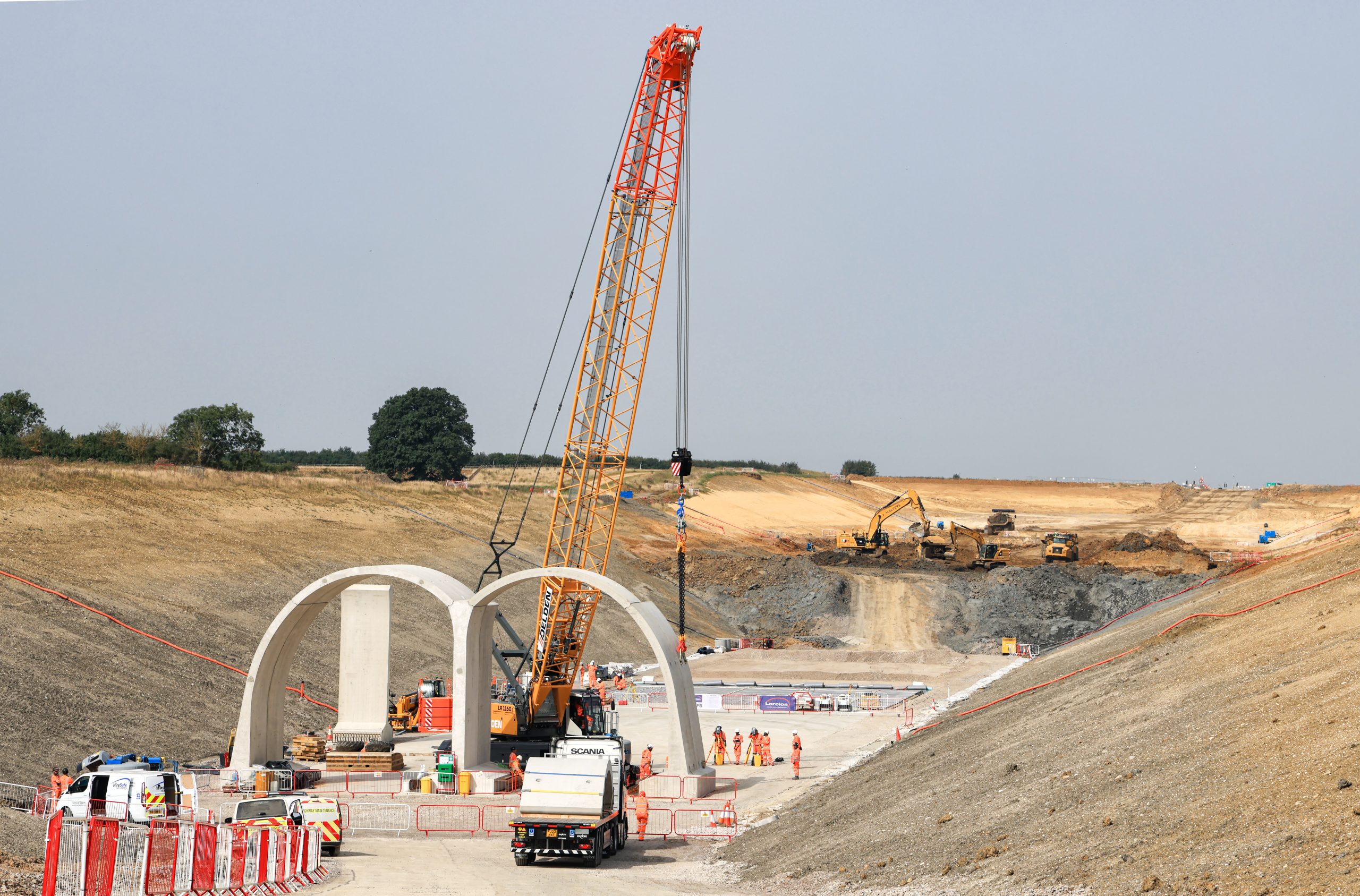 HS2 has begun assembling the Greatworth green tunnel the longest ‘green tunnel’ designed to blend the high speed railway into the rural landscape and reduce disruption for communities around Greatworth in West Northamptonshire.
HS2 has begun assembling the Greatworth green tunnel the longest ‘green tunnel’ designed to blend the high speed railway into the rural landscape and reduce disruption for communities around Greatworth in West Northamptonshire.
Unlike a bored tunnel, the shallow 2.7km tunnel is being built using a ‘cut and cover’ process which involves the excavation of a cutting, building the tunnel and then burying it, with trees, shrubs and hedgerows planted on top to blend in with the surrounding countryside.
The tunnel structure will be made from more than 5,000 giant concrete segments, made at a specialist pre-cast factory in Derbyshire, and assembled on site by HS2’s main works contractor, EKFB, a consortium made up of Eiffage, Kier, Ferrovial Construction and BAM Nuttall.
Applying lessons from the construction of the latest French high-speed lines, EKFB opted for this modular approach instead of a traditional process of pouring the concrete on site to boost efficiency and cut the amount of embedded carbon in the structure.
Greatworth is one of five ‘green tunnels’ that are being built on phase one of the HS2 project, which is designed to improve links between London, Birmingham and the north, boost the economy and free up more space on the existing rail network for freight and local services.
Designed as an m-shaped double arch, the Greatworth green tunnel will have separate halves for southbound and northbound trains. Five different concrete precast segments will be slotted together to achieve the double arch which is the height of two double-decker buses – one central pier, two side walls and two roof slabs.
The tunnel segments are being made by Stanton Precast in Ilkeston, Derbyshire, as part of a contract which could create up to 100 local jobs. All 5,410 segments will be steel reinforced, with the largest weighing up to 43 tonnes.
Concrete and steel are some of the biggest sources of carbon emissions within the construction industry and by reducing the amount of both materials needed for the tunnel, this lighter-weight modular approach is expected to more than halve the amount of carbon embedded in the structure. It also requires less people and equipment on site, improving safety and reducing disruption for residents.
Lessons learned during the construction of a similar green tunnel at Chipping Warden are being applied to the delivery of Greatworth. These include changes to quality control and the delivery and installation of the segments.
Shorter green tunnels are also being built at Wendover in Buckinghamshire, Burton Green in Warwickshire and in the London Borough of Hillingdon. All the tunnels will have specially designed ‘porous portals’ at either end to reduce the noise of trains entering and exiting the tunnel, along with small portal buildings to house safety and electrical equipment.
Share on:



